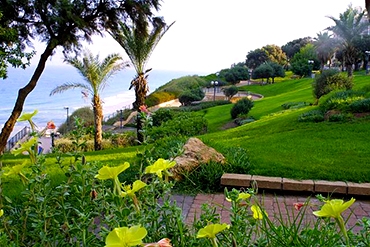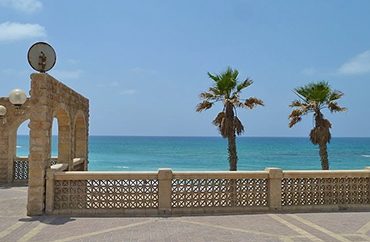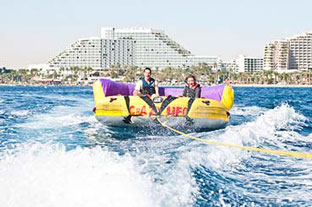Netanya

ארכיון עיריית נתניה CC BY 2.5
Shaked Promenade along Northern Coast of Netanya
Nathan Strauss: How Netanya Got its Name
The popular coastal resort of Netanya is named after the American Jewish philanthropist Nathan Strauss, co-owner of the famous Macy’s store in New York, who became a staunch supporter of Israel, then Palestine, when he made his first trip here in 1912.
Strauss always strongly supported child welfare organizations and thus donated two-thirds of his wealth to Israel to fund child health clinics, as well as organizations set up to fight malaria and other contagious diseases. These diseases were rampant in Israel at the time, causing many child fatalities.
Netanya Early History
Unlike most coastal towns which are thriving holiday resorts and home to many European retirees, Netanya started life as a mass of sand dunes. Agriculture, not tourism, was what the early pioneers had in mind, as well as suitable land for citrus orchards. In 1928 pioneers bought 350 acres of land from the local Arab ‘muchtar’ (head) of Umm Haled village. This area is now a small section inside Netanya. The old sycamore tree that stood in the center of the original piece of land can still be seen there today.

צילום:ד”ר אבישי טייכר CC BY 2.5
Fountain at Independence Square
However, for the land to be viable for living and agriculture, clean water had to be found. With this goal in mind, the Bnei Binyamin Association member who had bought the land started digging for water. On February 12, 1929 fresh drinkable water was struck. Six days later, on Tu B’Shvat (15th day of the Jewish month of Shvat which is also the New Year for trees), the first five settlers moved into the area and began plowing and cultivating it. Since then, Tu B’Shvat has always been considered the anniversary of the founding of Netanya.
Natanya Israel
The year 1930 saw the establishment of the first shops and kindergarten in Natanya Israel; in 1931, the first school opened. The British architect Cliff Holiday,who had already been successful in drawing up urban plans for Jaffa and Tiberias, was asked to do the same for Netanya. It was decided that Netanya would be divided into three sections: tourism and commerce along the coast, housing and small agricultural farms in the center, and industry inland to the east.
In 1933 the tourism industry got off the ground with the opening of the first hotel in Netanya named the Tel Aviv Hotel.

Avi Deror CC BY 2.5
Netanya Ampitheater
Netanya Beach
From 1934-1939 the population grew with the aid of 17 illegal immigrant boats (ma’apilim) coming from Europe carrying refugees from the Shoah (Holocaust) in Europe. The British had seriously curtailed Jewish immigration, making it necessary for these boats to land secretly at night. As soon as the boats reached the shores of Netanya, residents rushed to greet them, intermingling with immigrants in order to ensure that that British would be unable to separate the legal residents from the illegal refugees. Even today there is a Netanya beach called ‘Ma’apilim Beach’ in memory of these landings.
Netanya: Did You Know?
Netanya was the first area to receive the status of city after the establishment of the State of Israel in 1948. It had 9,000 residents then; today there are over 180,000 people who call Netanya home.








